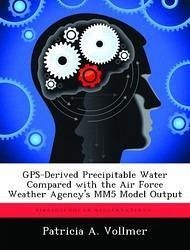Current moisture initialization sources lack the spatial and temporal resolution required for mesoscale moisture forecast accuracy critical for military operations. The Global Positioning System (GPS) satellite constellation provides an opportunity to extract accurate moisture observations based on the refraction of the GPS signal through the troposphere. GPS-derived precipitable water (PW) from two research areas was independently compared with the Air Force Weather Agency's (AFWA's) MM5 PW model output. Results were concurrent with similar studies comparing GPS-derived PW with numerical weather models. The mean correlation between the GPS-derived PW values and MM5 output in CONUS was 92.5%, while in Alaska it was 72.8%. Mean model biases between the two data sets were -1.22 mm in CONUS and 0.69 mm in Alaska, where a positive bias signifies the GPS network having higher PW values. Mean root mean square errors were 4.36 mm in CONUS and 2.76 mm in Alaska. In addition, comparisons were made between moist and dry locations as well as inland and coastal locations, and a special study was done comparing GPS receiver site elevation and standard deviation. This work has been selected by scholars as being culturally important, and is part of the knowledge base of civilization as we know it. This work was reproduced from the original artifact, and remains as true to the original work as possible. Therefore, you will see the original copyright references, library stamps (as most of these works have been housed in our most important libraries around the world), and other notations in the work. This work is in the public domain in the United States of America, and possibly other nations. Within the United States, you may freely copy and distribute this work, as no entity (individual or corporate) has a copyright on the body of the work. As a reproduction of a historical artifact, this work may contain missing or blurred pages, poor pictures, errant marks, etc. Scholars believe, and we concur, that this work is important enough to be preserved, reproduced, and made generally available to the public. We appreciate your support of the preservation process, and thank you for being an important part of keeping this knowledge alive and relevant.
Bitte wählen Sie Ihr Anliegen aus.
Rechnungen
Retourenschein anfordern
Bestellstatus
Storno








